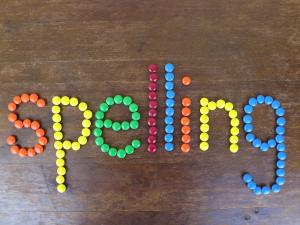Patterns to make times tables easier
OLD ID: 35
Some of you may find the pattern of the 4x table that I’m about to highlight so obvious that you wonder why I’m writing about it. Others will say “Wow I never noticed that” and the rest will probably think “But how could that help?” Patterns seem to appeal to some children whereas they leave others cold. Talk about them with your NumberWorker to see if they think patterns will help them learn their 4x or 6x tables:
The 4x pattern is best demonstrated with fingers. Count up in fours using the fingers on one hand: 4, 8, 12, 16, 20. Then exclaim in wonder that you can just repeat this to work out the rest. The trick is that you have to add 20.
4x1=4, 4x6=24
4x2=8, 4x7=28
4x3=12, 4x8=32
4x4=16, 4x9=36
4x5=20, 4x10=40
I suggest showing it on your fingers because children find it easier to see 6 as similar to 1, 7 as similar to 2, 8 as similar to 3 etc if you show them on fingers. I go back to count the 4x6 etc on the same hand, but use touch fingertips for 1-5, then where the finger joins the hand for 6-10.
Not quite so obvious mathematically is the pattern for the 6x facts. It works for all the even numbers less than 10.
The answer ends with the same digit you are multiplying by 6 eg 6x4 will end in 4, 6x8 will end in 8.
The answer starts with half of the digit you are multiplying by 6 eg for 6x6 the two digits are firstly “half of 6” then 6 ie 36.
Test it out. It really works!
There’s actually a lovely pattern for “6x the odd numbers” too, but I never bother showing it to children because it isn’t clear like the “6x evens” one. For the last digit you add 5 to the number you were multiplying. For the first digit you still take half, but because it is an odd number you are multiplying, you need to ignore the 0.5 and take the largest whole number half. Eg 6x3 gives a second digit of 8 (5+3) and a first digit of 1 because half of 3 would be 1.5 but you need to ignore the 0.5.
The difficulty arises when adding 5 to the ones digit causes it to go over 10. Then you have to “carry the one” into the second digit of your answer. Eg 6x7 gives a second digit of 2 because 5+7 is 12 and the 10 from the 12 gets added to the 3 tens (that comes from half of 7) to give an answer of 42.
Too complicated to be useful when memorizing tables, but mathematically interesting never-the-less!



